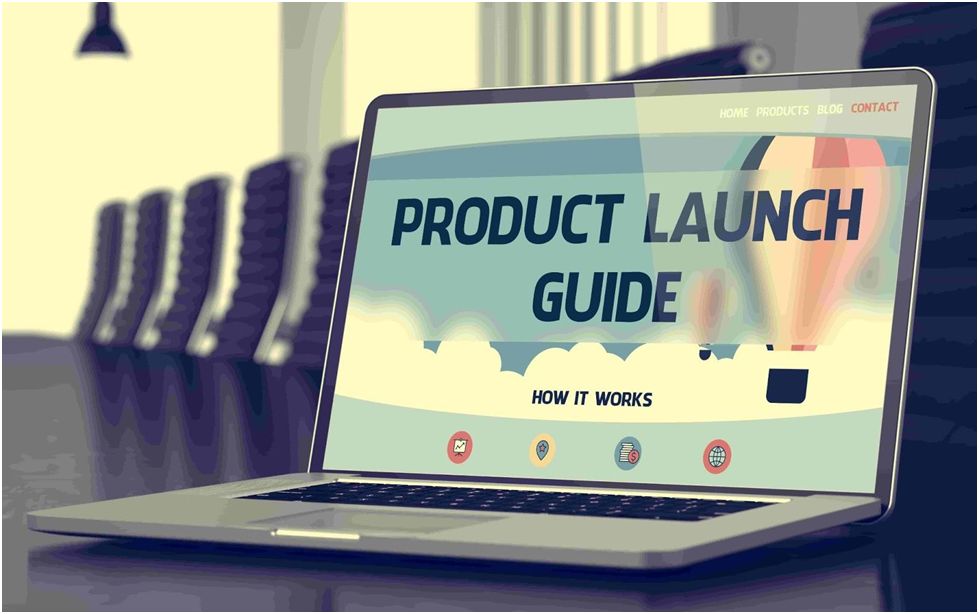
Getting a new product feature is something that most businesses and customers alike look forward to; it’s what adds flavor to the company branding and keeps clients coming back and wanting more. Let’s say you have a new model or edition of your merchandise and you want to introduce it to your target market, is it enough to just put it out on your website or e-commerce shop? There has to be a better way to present your latest products and achieve your goals for the month.
We think that your newest products deserve the spotlight, which is why we’re here. In this article, we will define what a product launch is, and the necessary steps you should take to facilitate the launch of your product. These are all proven tips that have worked for various digital marketers and business owners, so if you’re interested to learn more then read on!
Table of Contents
What is A Product Launch?
A product launch is a type of procedure that centers its goal around making a brand’s product available to its target consumers by building up sales momentum. Its functions include, but are not limited to, defining key marketing objectives, identifying specific sales strategies, and maneuvering the product direction towards business success.
A common misconception behind product launches is that people think that they are a one-time event, when in reality it is a continuous process; revealing your most current product is only the tip of the iceberg.
We need to look at product launches as a cycle that moves from a preparation stage, followed by the execution phase, then a post-launch period. This “final” stage is where businesses should gather customer feedback and work to improve the launched product or the services that came with it.
Several considerations need to be taken into account when launching a product. Here are some of the factors that need to be looked at:
- Time Frame: The process could be complex and the duration may extend should the company fail to prepare ahead of time. Ideally, businesses should start preparing four to five months in advance to fully and effectively launch their products.
- Organizational Communication Channels: All the departments involved in the product launch should be synchronized and on the same page of the product launching timeline. The teams which often participate in product launches are the marketing, sales, finance, HR, customer service, and product development teams.
They must establish a cohesive and strategic communication line while being on point with the quantifiable goals of the product launch. Any inconsistencies between the engaging departments can damage your business’s reputation, so be sure that everyone can keep track of each other’s progress.
- Unique Selling Point: Polishing the USP and brand messaging is necessary to the product launch. It provides sellers with the capacity to match their product’s features with the qualities which customers look for in the category of the business’s merchandise.
- Aligned Preparations: Businesses are expected to prepare all the relevant marketing collateral and map out the product launch event. While that is happening, the sales department should propose and outline the approach which they will take when implementing the lead generation sources.
On the other hand, the customer care and support team should be streamlining information from all of the departments to know how to answer customer inquiries.
- Post-Launch Strategy: Each department should decide on the type of metrics to follow to assess feedback and recorded behavior. At this time, a risk management plan should be developed for your product launch, and resolving any issues should also be made at this point.
Curious about what a product launch is supposed to look like? A successful product launch consists of a finalized version of the product and a finalized market expectation plan. The purpose of this is to drive consumers into wanting and buying the launched product.
The indicators of a successful product launch comprise sales, positive reviews, excellent customer support, and more, depending on the metrics agreed upon by the organization. All of these factors need to be tracked to determine if the company has attained its agenda for launching the product.
Given this information, we can see why this process is rigorous but rewarding when executed correctly. Moving forward, we will take a closer look at the specific instructions which online sellers should follow when launching a product.

Easy Product Launch Guide
Every year, there are around 30,000 failed products launched online; most of these products belong to start-ups or relatively smaller businesses. It’s not that their products are not good enough, it’s just that the way their products were delivered across channels didn’t meet the expectations of both the market and business metrics.
If you don’t want your resources for product launches to come to waste, then you’ll have to run the extra mile to ensure that your products are developed, launched, and promoted properly. To make your business management easier, below are 10 steps that will lead to a successful product launch:
Step #1: Satisfy your consumer’s needs the best way possible
- Disseminate a survey and get to learn more about your market
- Enumerate the reasons why people should buy your new product
- Identify how your new product can solve today’s problems in society
- Discover the ways by which your product can reflect your market’s values
- Compare and contrast your justifications with your audience’s needs
Step #2: Know the brands you will be competing with
- Observe how your competitors behave through their social media marketing
- Determine what sets your products and business apart from your competitors
- Get into the specifics of your products that are exclusive to your brand
- Emphasize the unique advantages that consumers will get from buying your products
- Concentrate on discussions about the credibility and reliability of your brand
Step #3: Create a prototype of your new product and test it
- Double-check your product prototypes to avoid investing in defective items
- Hire beta testers who will try and evaluate your products before it reaches the market
- Promptly incorporate the feedback which you will receive from your beta testers
- Discuss suitable item storage and packaging with your warehouse manager
- Prepare an Amazon suspension appeal in case your shop ever receives reports
Step #4: Have a reconfiguration phase for your products
- Receive product feedback from your family, friends, colleagues and trusted partners
- Make the necessary arrangements or adjustments depending on the feedback
- Review the differences between the original prototype and the current product version
- Examine your testers’ reactions: is the product sparking joy, interest, or curiosity?
Step #5: Check out the profit margin of your product launch
- Have a spreadsheet or tab where you can record the number of products sold, the sum of revenue generated, the break-even sales volume, and the accumulated net profit
- Decide on the performance of your product launching by revisiting your previous product launch’s strengths and weaknesses
- Figure how your numerical goals would be achieved during the product launching by computing the conversation rate and the amount of traffic that needs to be reached
Step #6: Build a sense of anticipation using pre-marketing tactics
- Allow your digital marketing and advertising team to build awareness of your product
- Publish audio-visual content which promotes your products during the launch
- Maximize your brand’s content creation processes with an SEO and graphics team
- Create an email marketing campaign that will reach out to your previous customers
- Showcase a powerful call-to-action (CTA) on your websites and social media pages
Step #7: Secure a solid supply chain for your product launching
- Have an inventory for your products that will meet the market’s demand
- Work closely with vendors and scale the production of your products
- Consider the maximum capacity and total number of units provided to you
Step #8: Have a network where you can share your product
- Set a strategic launch date which you will stick to and give announcements for
- Keep your social media, website, and other pages up-to-date with the product launch
- Promote your product launch with informational or entertaining content and reminders
Step #9: Be sure to reach out to the post-launch press community
- Contact public relation firms and media outlets to cover your product launch story
- Provide your audience with a narrative about the origins or inspiration of your newly launched product
- Invite community engagement in the form of post reactions, comments, and shares to keep the conversation about your product going
Step #10: Accept public feedback during the post-launch
- Expect that you will be receiving various kinds of customer reviews
- Professionally address negative comments and offer immediate help to resolve issues
- Reward customers for answering quick surveys with one-time discounts or exclusive giveaways
Was this your first time learning about what a product launch is? Was our 10-step guide helpful to you? Let us know what you think by sharing your thoughts in the comments section below. We would love to hear from you!

Jayce is the managing director of Seller Interactive, the number one Amazon advertising agency based in Canada that helps brands build their business on Amazon. His content marketing expertise has led him to work with brands such as Toyota and GoDaddy, producing content that has reached over 20M views in a month.